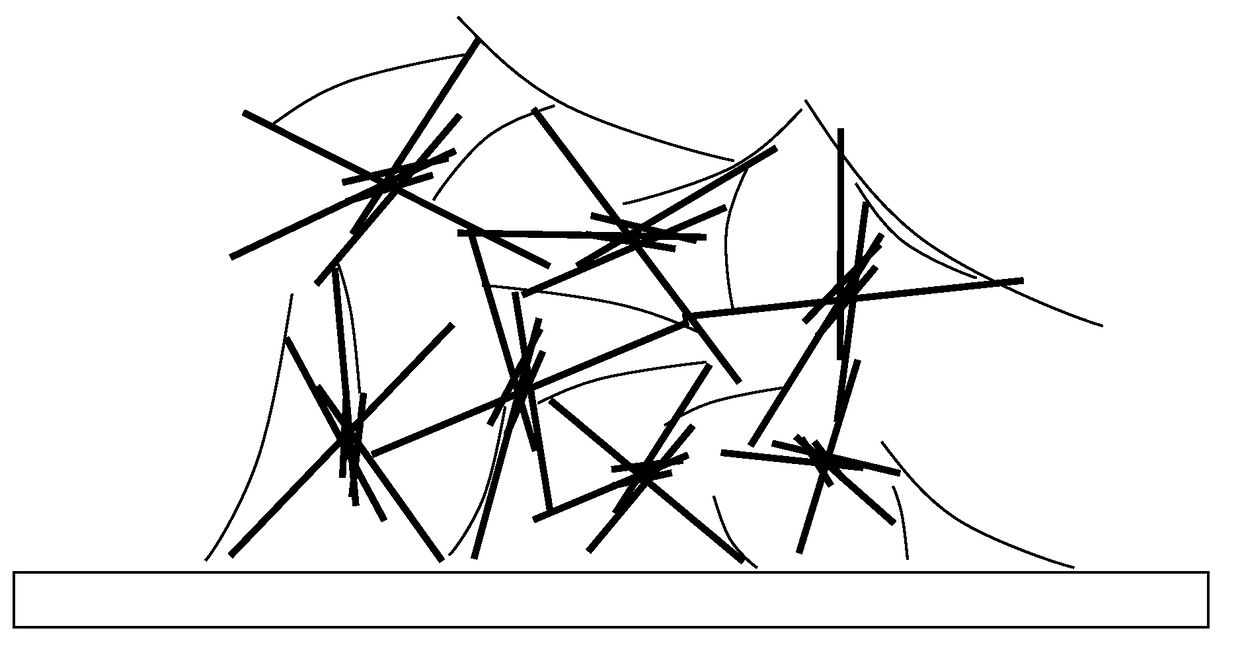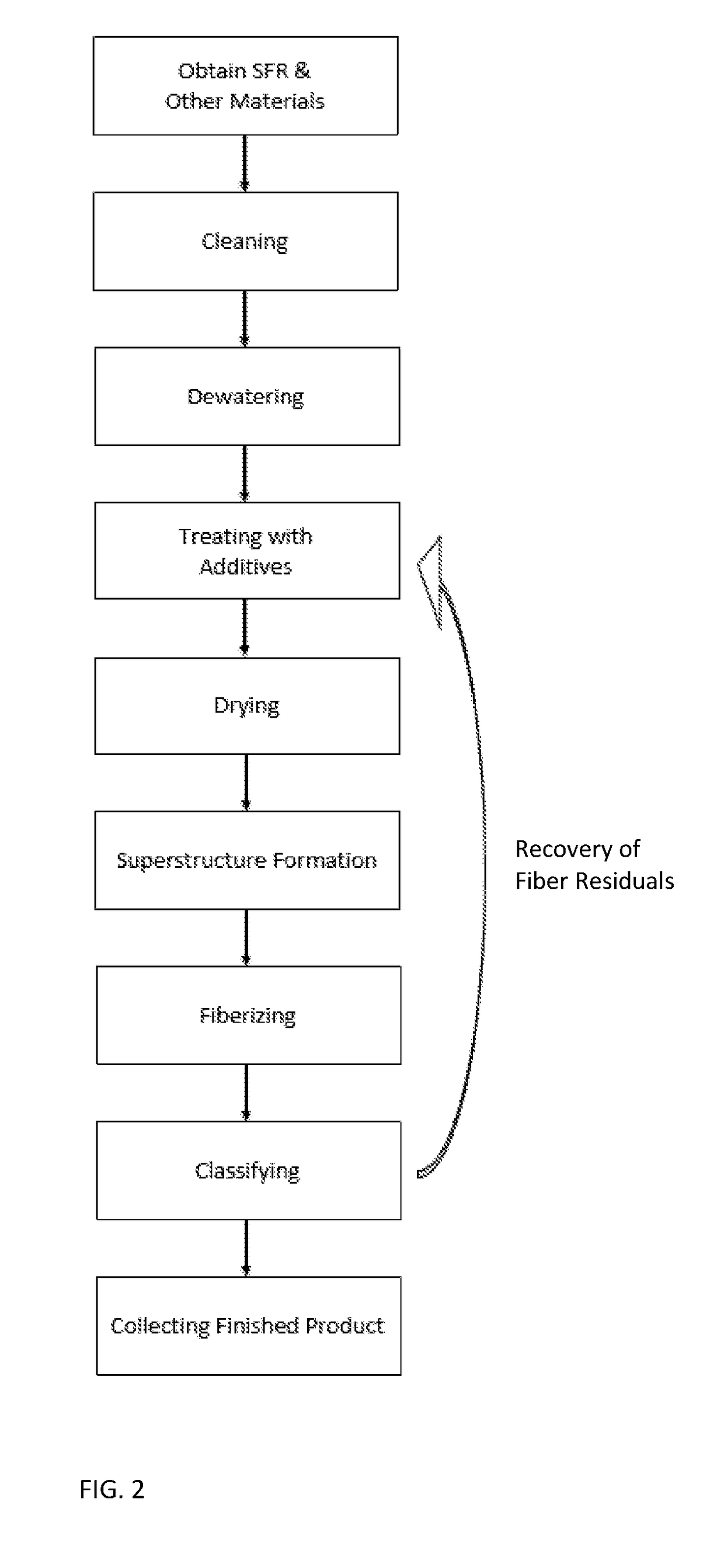Cellulose-based insulation and methods of making the same
- Summary
- Abstract
- Description
- Claims
- Application Information
AI Technical Summary
Benefits of technology
Problems solved by technology
Method used
Image
Examples
Embodiment Construction
[0041]FIG. 1 illustrates a simplified representation of primary components of a system 10 used to make a cellulose-based insulation with fire retardancy of the present invention, which insulation is represented in FIG. 5. The insulation of the present invention includes superstructure constructs of the feedstock materials used to make it, which superstructures enhance the void features and, therefore, improving the thermal performance characteristics of the insulation. The insulation may be installed in place, such as by blowing or spraying it in place, while maintaining the integrity of the superstructures and thereby maintaining the void integrity of the insulation after installation. Primary steps of a process for making a cellulose-based insulation of the present invention are represented in FIG. 2.
[0042]The system 10 may be configured as shown in FIG. 1 and include a feedstock source container 12, a chemical treatment source 14, which may be a holding tank or any other source o...
PUM
 Login to View More
Login to View More Abstract
Description
Claims
Application Information
 Login to View More
Login to View More - R&D
- Intellectual Property
- Life Sciences
- Materials
- Tech Scout
- Unparalleled Data Quality
- Higher Quality Content
- 60% Fewer Hallucinations
Browse by: Latest US Patents, China's latest patents, Technical Efficacy Thesaurus, Application Domain, Technology Topic, Popular Technical Reports.
© 2025 PatSnap. All rights reserved.Legal|Privacy policy|Modern Slavery Act Transparency Statement|Sitemap|About US| Contact US: help@patsnap.com



